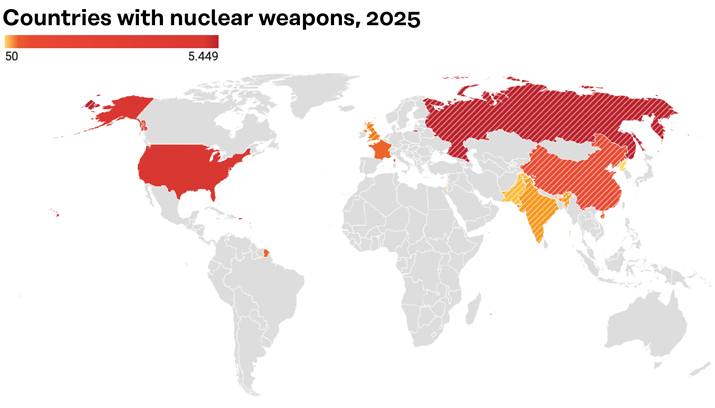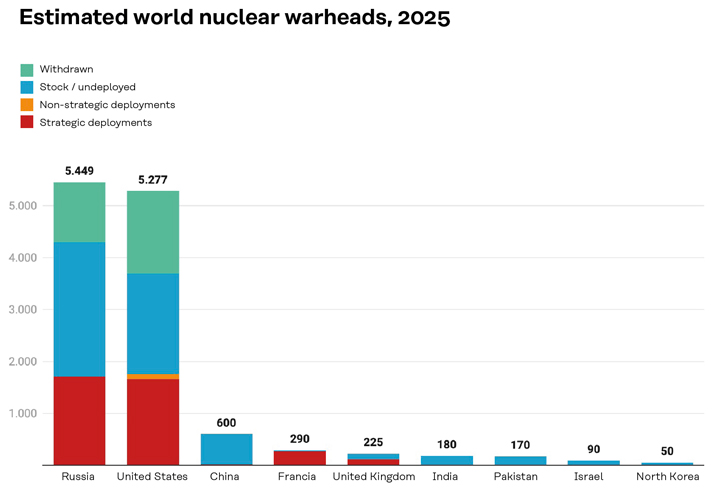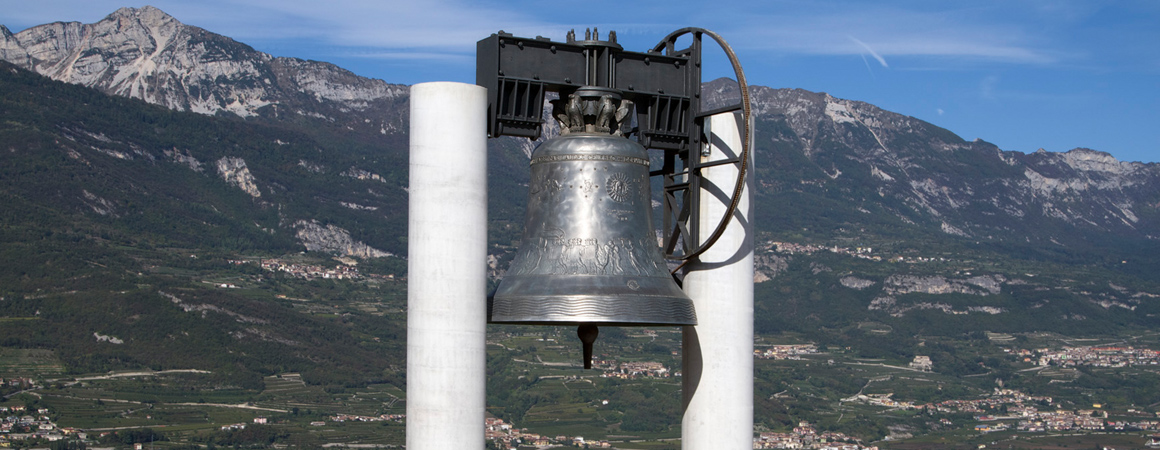A STUDY BY THE FEDERATION OF AMERICAN SCIENTISTS
The Archivio Disarmo International Research Institute recently published in its journal 'IRIAD Review. Studi sulla Pace e sui conflitti’ (Peace and Conflict Studies) an in-depth look at the world's nuclear weapons from a report by the Federation of American scientists. We are pleased to republish the illustrations here, and thank the experts of Archivio Disarmo for their collaboration.
Despite the progress made in reducing nuclear arsenals since the end of the Cold War, the total number of nuclear warheads in the world remains extremely high. At the beginning of 2025, nine countries held a total of 12,331 warheads. According to a study by the Federation of American scientists, this is a kind of 'atomic duopoly'. The US and Russia together hold about 88% of the world's nuclear inventory and 84% of the stockpiled warheads available to the armed forces. The rest of the atomic armament is scattered all over the planet. With the exception of Washington and Moscow, no nuclear-armed government considers it necessary to possess more than a few hundred warheads for national security, although in many cases arsenals are growing.
Globally, the overall number of nuclear weapons is declining, but the pace of reductions is much slower than in the last 30 years. The drop in absolute value is mainly due to the fact that the US and Russia continue to dismantle previously withdrawn warheads. In contrast to this trend, the number of warheads in the military arsenals - i.e. those assigned to operational forces - has risen again. While the US is slowly reducing its arsenal, France and Israel keep their arsenals relatively stable. On the contrary, China, India, North Korea, Pakistan, the United Kingdom, and possibly Russia, seem to be in the process of strengthening their stocks.
According to the study, updated to March 2025, of the world's 12,331 nuclear warheads, some 9,604 are in military arsenals, ready for use on missiles, aircraft, ships or submarines. The remaining 2,727 were withdrawn, but remain intact pending dismantling. Of the 9,604 still operational, some 3,904 are deployed with forces operating in the field. Of these, more than 2,000 (US, Russian, British and French) are on high alert and ready for immediate use.
However, the exact number of nuclear warheads possessed by each country cannot be precisely defined, as it is protected by state secrecy. The available estimates, the experts point out, are based on independent analyses, public data, historical documents and occasional leaks. Transparency varies widely from country to country.
To give just a few examples, suffice it to say that between 2010 and 2018, the United States disclosed the size of its arsenal, but the administration led by Donald Trump stopped this practice in 2019. Upon arriving at the White House, Joe Biden restored it briefly in 2020, only to suspend the publication of data in 2021, 2022 and 2023. In 2021, the UK also announced that it would no longer publish data on its operational arsenal. Finally, in 2023, the United States and Russia stopped exchanging public data on deployed strategic warheads, as was stipulated in the New Start treaty.
From a historical perspective, it can be said that the quantity of nuclear weapons has decreased dramatically since the peak of around 70,300 warheads in 1986. However, the pace of reduction has slowed considerably since the 1990s and today relies almost exclusively on the decommissioning of retired warheads.
Contrary to the Nuclear Non-Proliferation Treaty (NPT), nuclear-weapon states seem intent on maintaining significant arsenals indefinitely. All continue to modernise their armaments, some are introducing new types of ordnance, and are expanding the role of nuclear power in their military strategy and public communication.
The estimates presented were prepared by Hans M. Kristensen, Matt Korda, Eliana Johns and Mackenzie Knight of the Federation of American Scientists, based on the work of Thomas Cochran, Robert Norris and William Arkin.








